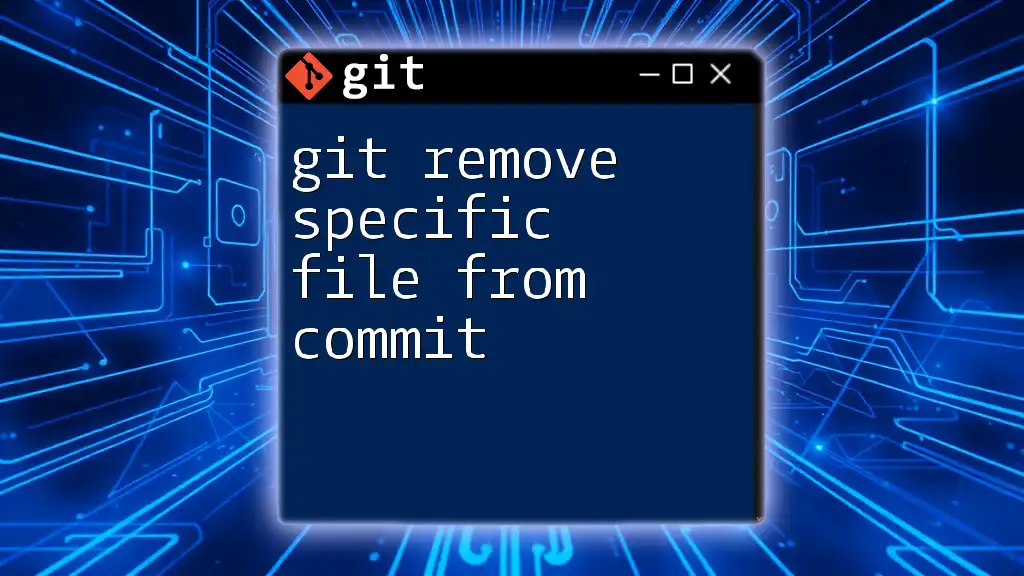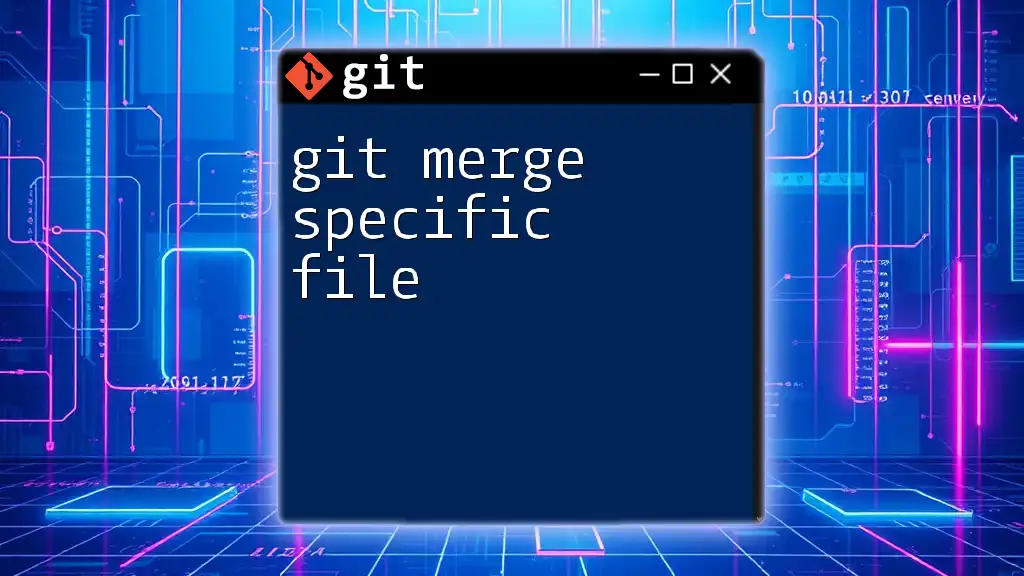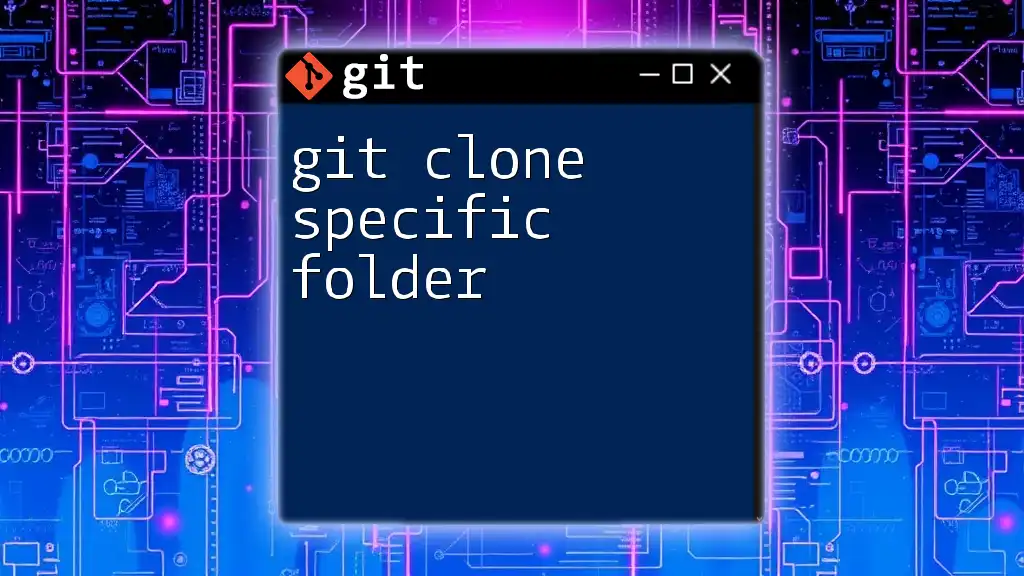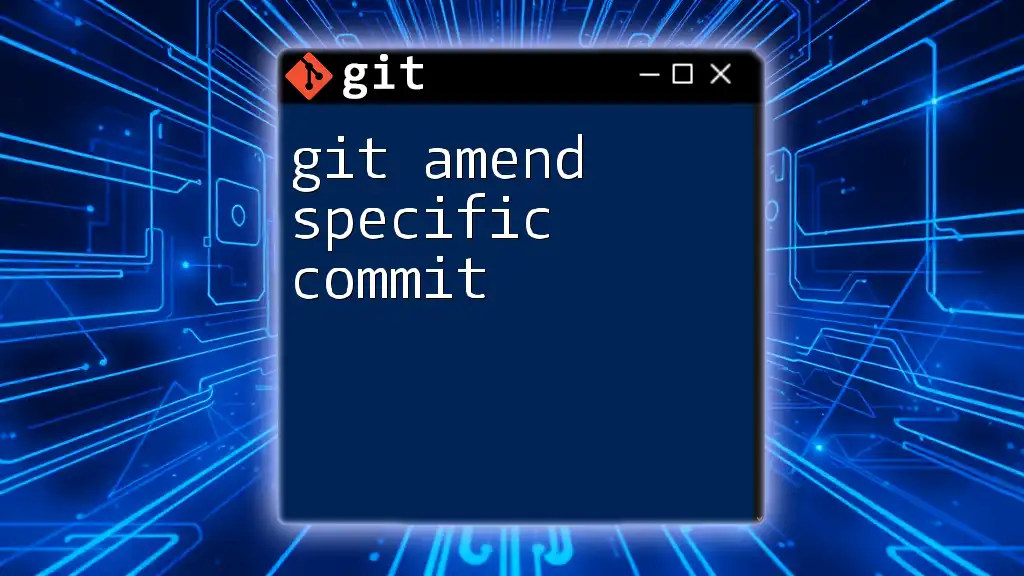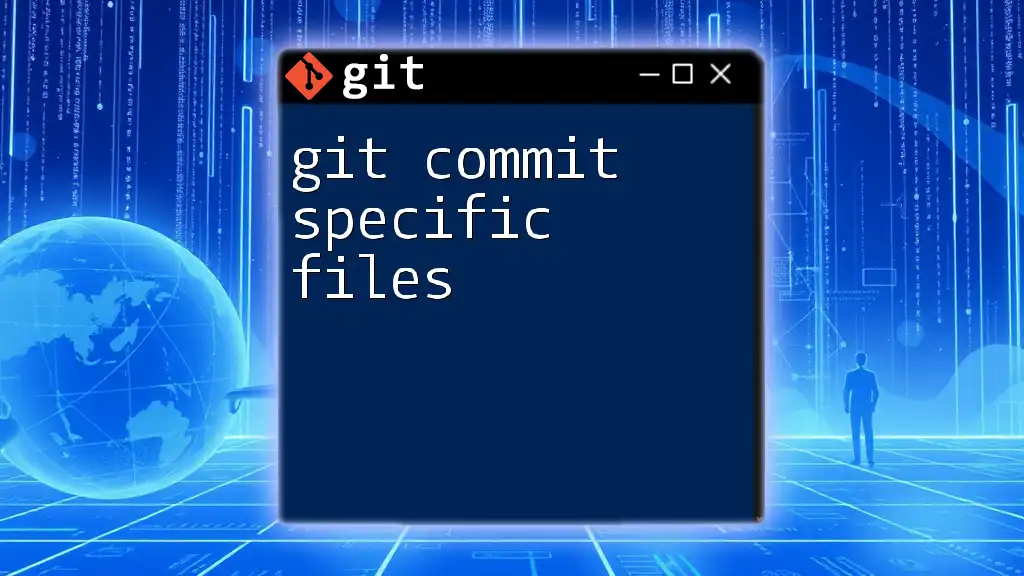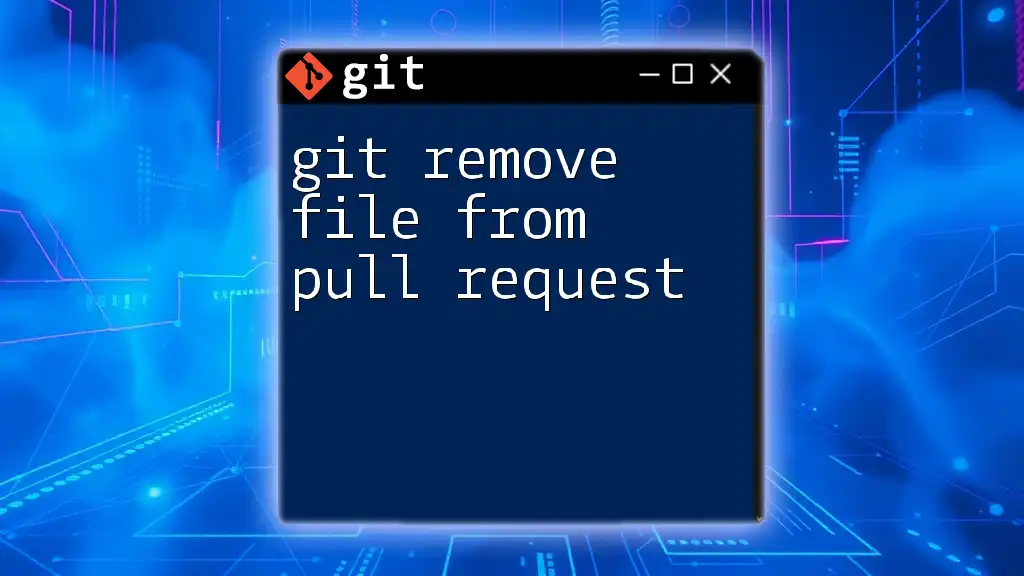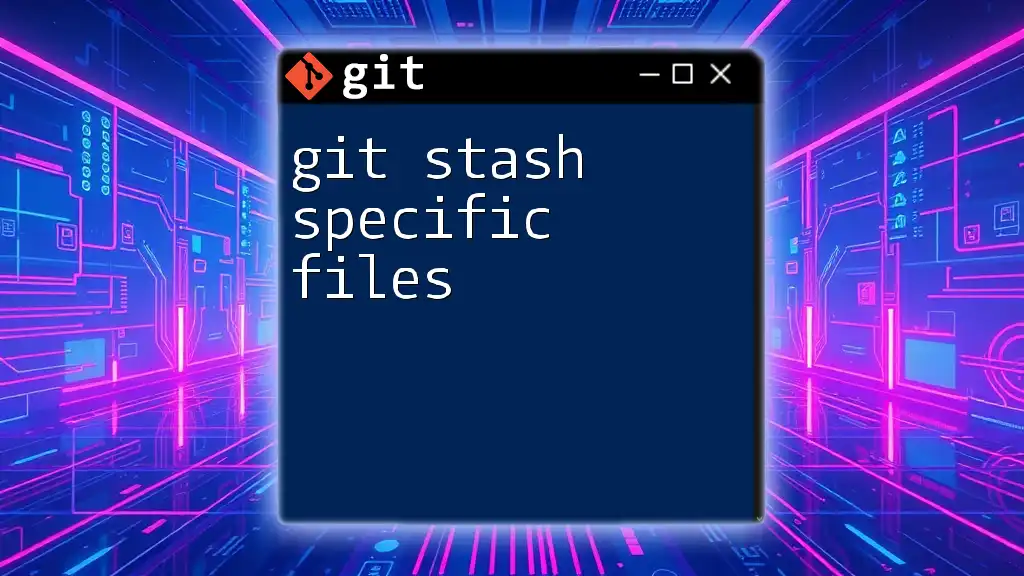To remove a specific file from a commit while keeping the changes in your working directory, you can use the following command:
git reset HEAD~1 -- <file-path>
This command undoes the last commit but keeps your changes, allowing you to modify or add the file as needed.
Understanding Git Commits
What is a Git Commit?
A Git commit is a fundamental concept within version control systems, representing a snapshot of your project at a specific moment in time. Each commit contains a record of changes made to files within the repository, along with metadata such as timestamps and commit messages that describe those changes. By using commits, developers can effectively manage the history of their projects, allowing for the easy rollback of changes or the tracking of progress over time.
Why Remove Specific Files from a Commit?
There are several scenarios where you might find it necessary to remove a specific file from a commit. Some common reasons include:
- Mistakenly added files: Perhaps you accidentally included files that don’t need to be tracked, such as dependency files or local configuration settings.
- Sensitive information in committed files: If you inadvertently committed sensitive data (like API keys or passwords), you’ll want to remove those files from your commit history.
- Redundant files not needed in the repository: Over time, you may accumulate files that serve no purpose in the project, and it's advisable to keep the repository clean.
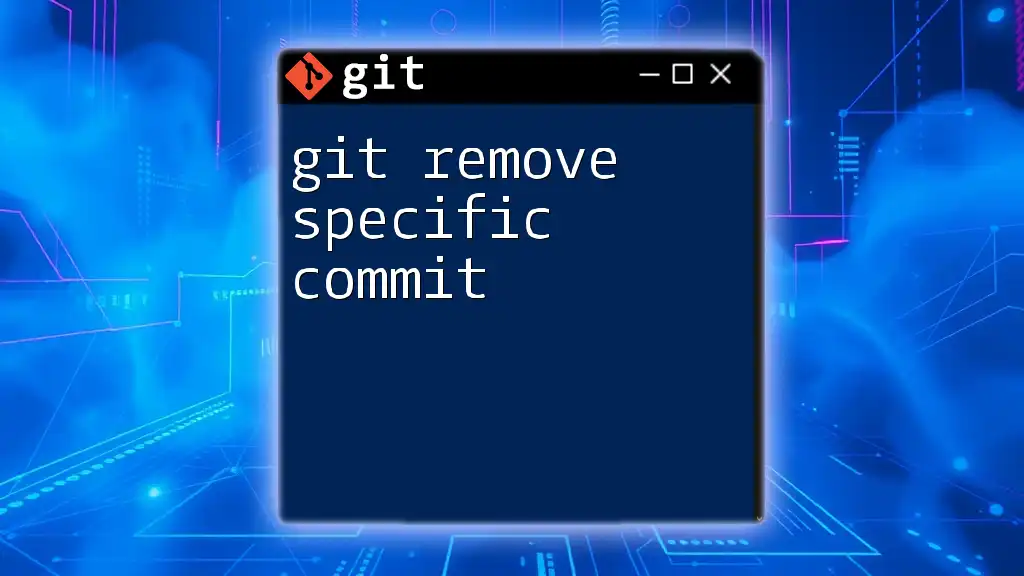
Prerequisites
Installing Git
Before you can remove files from a commit, you need to have Git installed on your machine. Here’s a brief overview of how to do that across different operating systems:
- Windows: Download the installer from the [official Git website](https://git-scm.com/downloads) and follow the setup instructions.
- macOS: You can install Git via Homebrew with the command:
brew install git - Linux: Use your package manager to install Git. For example, on Ubuntu, you might run:
sudo apt-get install git
Basic Git Commands
Familiarity with some basic Git commands will be valuable as you navigate managing commits. Key commands include:
- `git init`: Initialize a new Git repository.
- `git add`: Stage changes to be committed.
- `git commit`: Create a commit with the staged changes.
Methods to Remove Specific Files from a Commit
Undo Last Commit Without Losing Changes
Using `git reset`
One of the most straightforward ways to remove a specific file from your last commit is with the `git reset` command. This command can unstage changes while keeping them in your working directory. For example, to undo your last commit but retain files, you can run:
git reset HEAD~1
This command moves the HEAD pointer back by one commit without losing your work, allowing you to re-add only the files you want to include in the next commit.
Using `git checkout`
If you want to specifically focus on a file that was included in your last commit but now need to remove it, you can utilize the `git checkout` method:
git checkout HEAD -- <file-to-remove>
This command effectively restores the specified file to its state before the last commit, allowing you to amend the commit without that file included.
Removing Files from an Older Commit
Using `git rebase`
When working with Git history, `git rebase` can be invaluable for rewriting commits. This method is useful for adjusting files even from older commits. Performing an interactive rebase allows you to modify the commit.
-
Start by running:
git rebase -i HEAD~nHere, `n` represents the number of commits you want to examine. This command will open an editor displaying a list of those commits.
-
Mark the commit you want to change by replacing `pick` with `edit`. This will pause the rebase process and let you make modifications.
-
After you edit the commit, use the following command to remove the specific file:
git reset HEAD -- <file-to-remove> -
Finally, make sure to commit the changes:
git commit --amend -
Complete the rebase process by running:
git rebase --continue
Using `git reset` for Older Commits
In some situations, you may find it more appropriate to use `git reset` for older commits. While this technique can also modify history, it requires caution:
git reset --soft <commit-hash>
git reset HEAD -- <file-to-remove>
The first command resets your branch to a previous commit, while the second command unstages the file you wish to remove. Always be cautious when adjusting commits in shared repositories, as it impacts the commit history.
Finalizing Changes After File Removal
After you’ve removed the specific file from your commit history, don’t forget to recommit your changes:
git commit -m "Removed specific file from previous commit"
A clear and meaningful commit message is essential for maintaining the clarity of your project’s history.
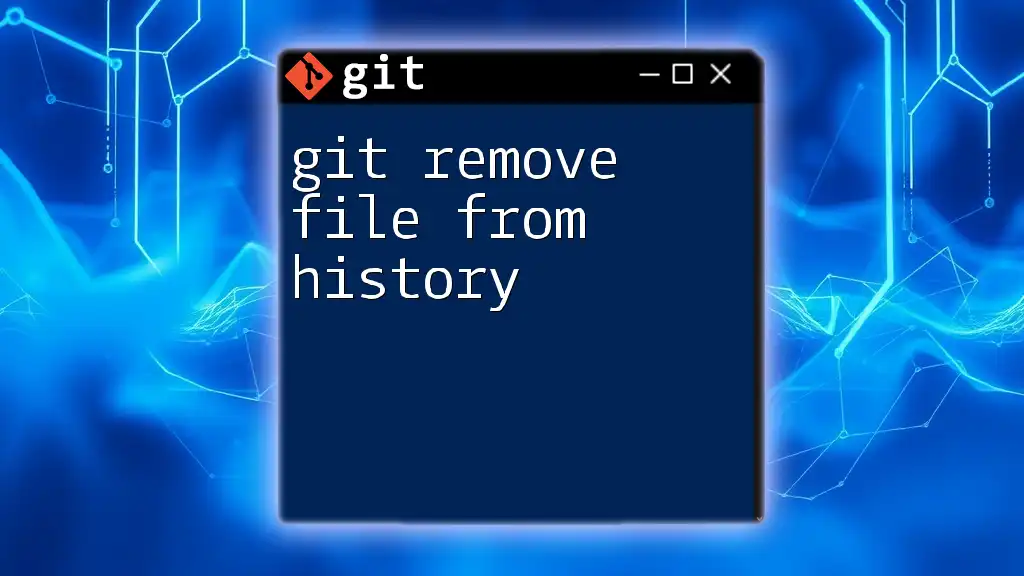
Alternative Approach: Amend a Commit
What is `git commit --amend`?
A convenient approach to change the most recent commit is by using the `git commit --amend` command. This command allows you to modify the last commit, whether that means adding files or removing unwanted ones.
git commit --amend
This will open your default text editor, allowing you to add changes to the commit or update the commit message as necessary.
Removing Files During Amend
If you decide to use amend to remove a file, follow these two steps:
-
Unstage the file:
git reset HEAD <file-to-remove> -
Amend the commit:
git commit --amend
This ensures that the unwanted file is no longer part of your last commit, streamlining your commit history.
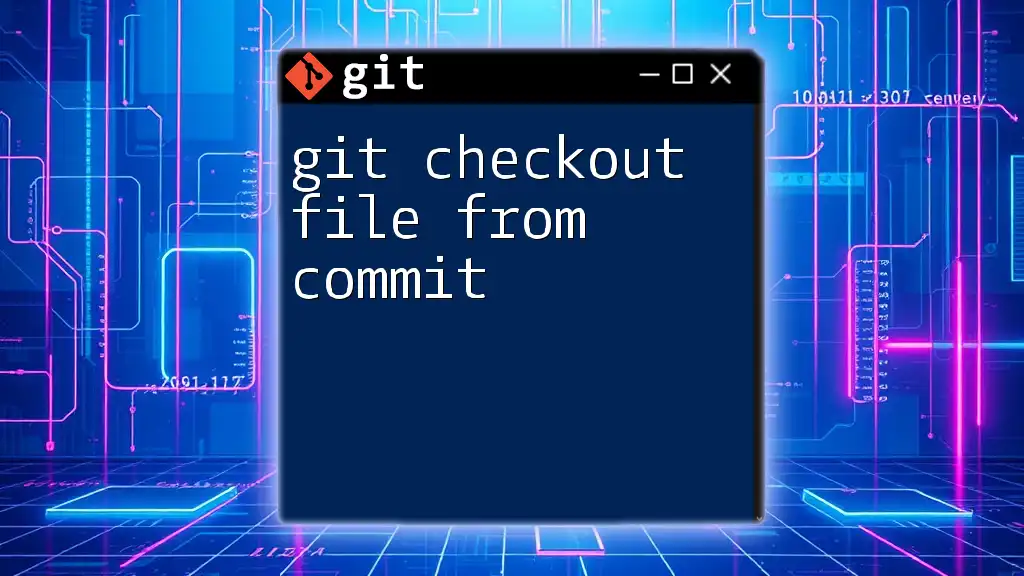
Handling Remote Repositories
Changes that involve rewriting commit history, such as those discussed above, need to be handled carefully, especially when dealing with remote repositories. If you have pushed commits to a remote repository and then modified history locally:
git push origin <branch-name> --force
Using the `--force` option allows you to push your rewritten history to the remote. However, this can cause issues for collaborators who may have already based their work on the old history, so communication is vital when performing such actions.

Best Practices and Tips
- Backup Important Changes: Before making significant changes to commits, create backups to safeguard valuable work.
- Use Branches: For experimental changes or to test modifications, creating a branch can help you isolate your work from the main codebase.
- Collaborate Effectively: Maintain communication with your team regarding any changes to commit history to avoid confusion or conflicts.
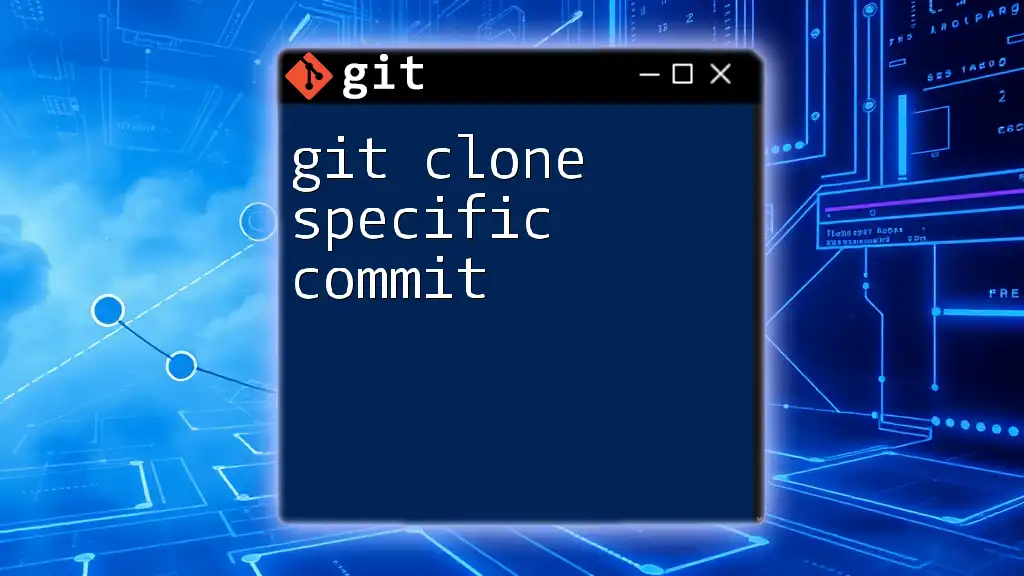
Conclusion
Learning how to effectively manage your commits in Git, including how to remove specific files from commits, is a crucial skill for any developer. As you become more familiar with these commands, your ability to manipulate project history will grow, allowing you to maintain a clean and organized codebase.

Additional Resources
Further Reading
For those keen on further honing their Git skills, consider checking the official [Git documentation](https://git-scm.com/doc) or exploring Git tutorial platforms available online.
Tools and Software
If you prefer a graphical interface for Git, various tools can simplify commit management. Notable mentions include GitKraken, Sourcetree, and IDE extensions that provide integrated Git support.
FAQs
Common questions surrounding the topic of removing files from commits often revolve around the safety of commands like `git reset` and `git rebase`. It's essential to practice these commands in a safe environment to avoid misunderstandings and potential data loss.

